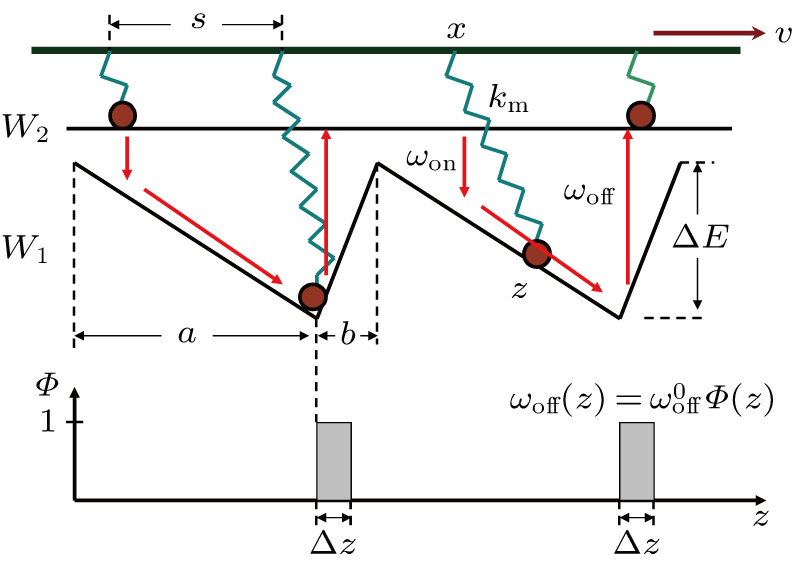Efficiency of collective myosin II motors studied with an elastic coupling power-stroke ratchet model
Project supported by the Key Research Program of Frontier Sciences of Chinese Academy of Sciences (Grant No. Y7Y1472Y61), the National Natural Science Foundation of China (Grant Nos. 11205123, 11574329, 11774358, 11747601, and 11675017), the Joint NSFC-ISF Research Program (Grant No. 51561145002), the CAS Biophysics Interdisciplinary Innovation Team Project (Grant No. 2060299), the CAS Strategic Priority Research Program (Grant No. XDA17010504), and the Fundamental Research Funds for the Central Universities (Grant No. 2017EYT24).
(color online) Schematic diagram of a two-state ratchet model with elastic coupling (Model I). Motors are periodically (with spacing s) coupled to a backbone (which corresponds the thick filament) by springs (which corresponds the stalk of myosin II, its stiffness is km). The motor heads can transit between state 1 and state 2. The sawtooth periodic potential W1 with period l =a+b corresponds the situation that the head is attaching at the thin filament, while the flat W2 does the situation that the head is detaching and can diffuse freely along z. The rate of ATP excitation is 
